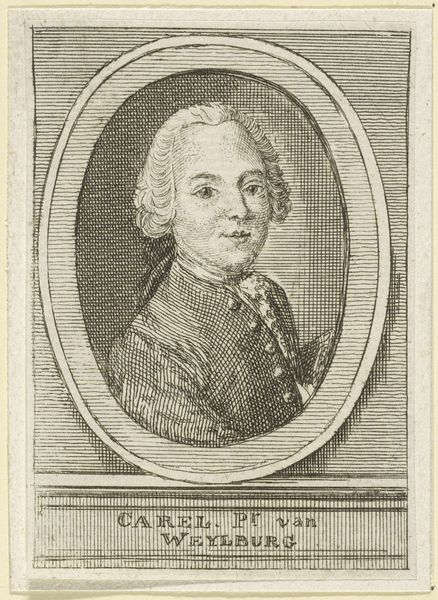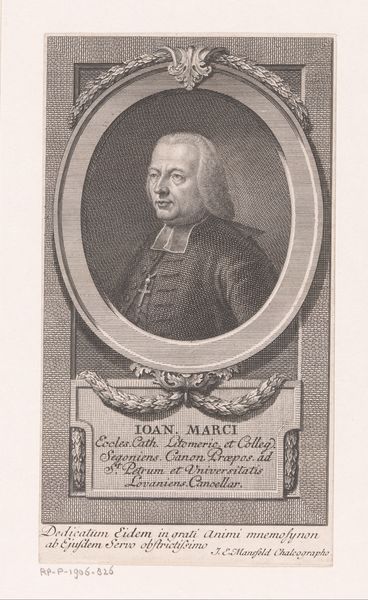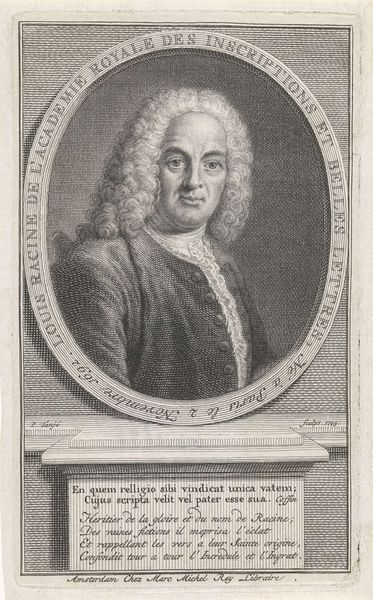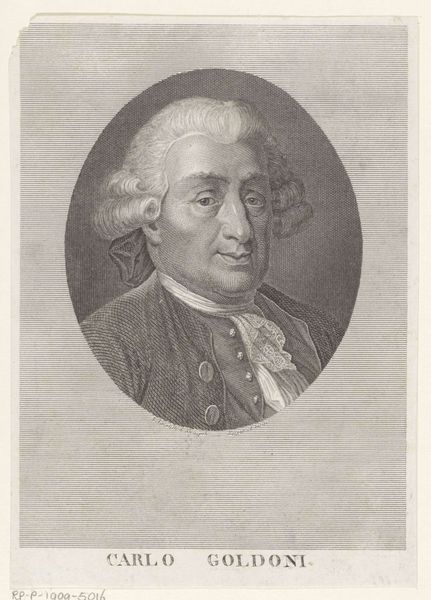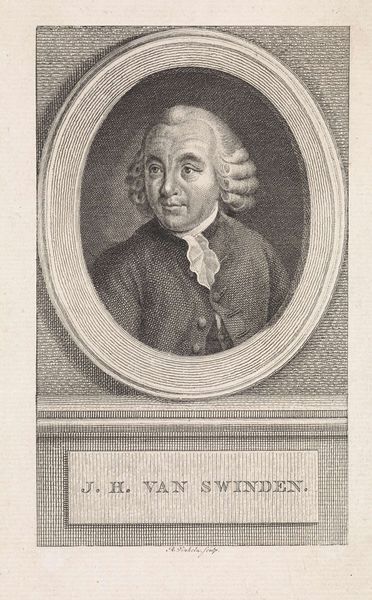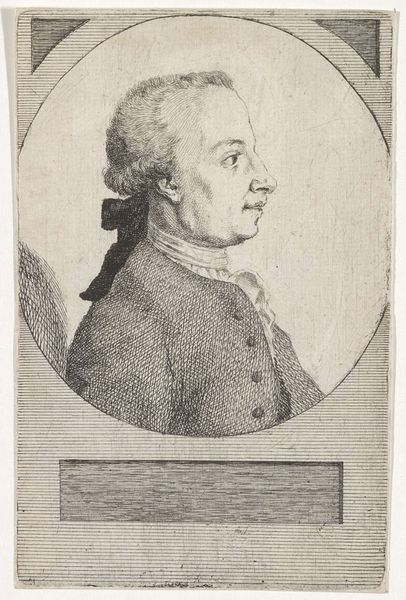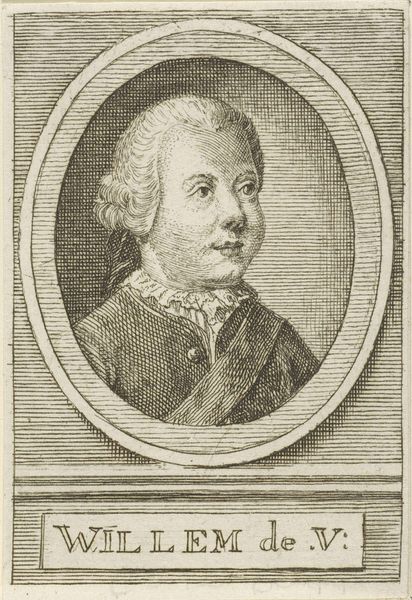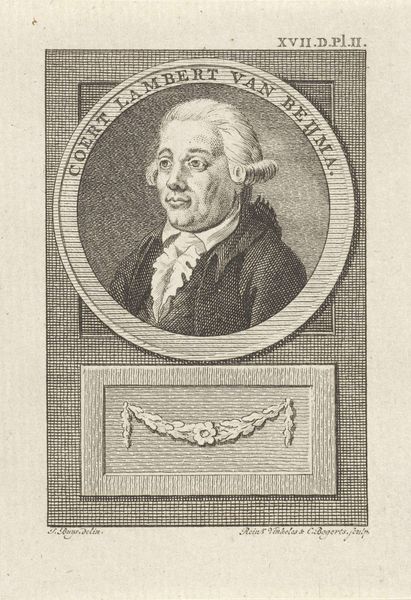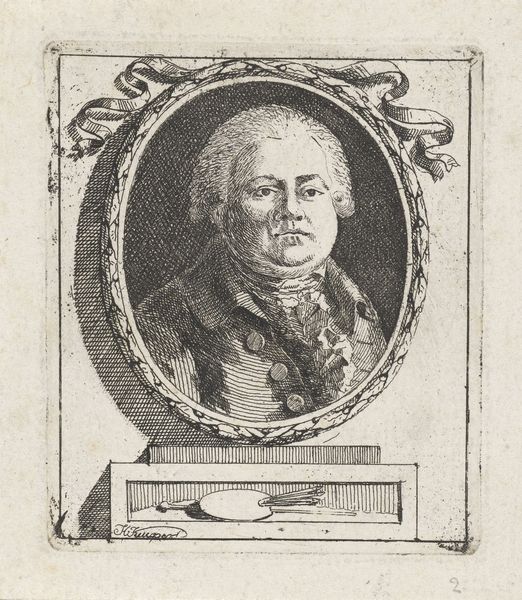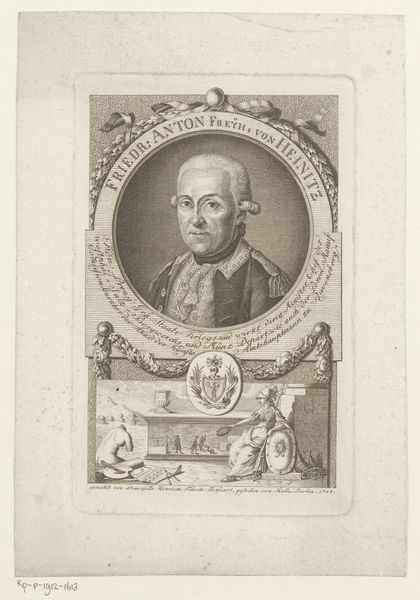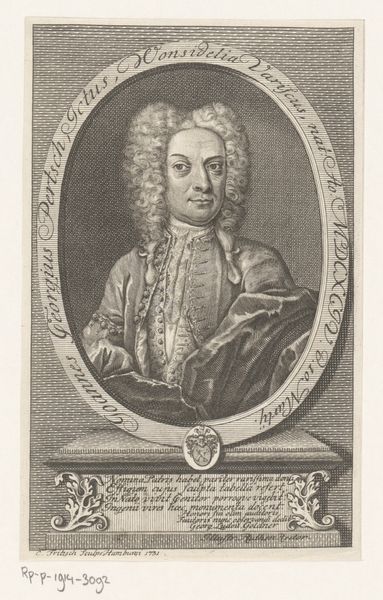
Dimensions: height 90 mm, width 53 mm
Copyright: Rijks Museum: Open Domain
Editor: Here we have "Portret van Alexander Friedrich von Knobelsdorff," dating sometime between 1764 and 1804. It’s an engraving – so, a print – by Peter Haas. I’m immediately drawn to the intricacy of the line work, and how much detail he manages to get from it. What do you see in this piece? Curator: What grabs my attention is precisely the "print" aspect. Think about the labor involved: the engraver, the pressmen, the distributors. This wasn't just about representing the elite von Knobelsdorff. It was about creating a commodity, a reproducible image consumed within a specific social and economic context. How do the materials – the copperplate, the ink, the paper – influence the dissemination of this portrait, and its meaning? Editor: That's fascinating! So, rather than just focusing on von Knobelsdorff himself, we should be considering who *owned* these prints, and what they did with them. It's almost like a very early form of mass media. Curator: Exactly. Who was meant to consume this image? Was it an aspirational object for the bourgeoisie, a memento for family and friends, or perhaps a tool for solidifying von Knobelsdorff’s social standing? Think about how the act of *collecting* prints reflected power dynamics. The labour behind this belies a sophisticated, evolving media landscape. Editor: It makes me see the Baroque style in a new light. The embellishments and the detail feel less about celebrating one person, and more about showcasing a culture of production and consumption. The artistry isn't just in the final image, but also in the technique, the tools, and its purpose in that period. Curator: And in that way it mirrors many processes and products today. That engraving is not merely aesthetic: it shows us so much of that era’s materials, technologies, and socio-economic currents. It recontextualizes everything we thought we understood about portraiture of the era. Editor: I'll definitely look at prints differently now, thinking not just about *who* is depicted, but *how* the image was made, and what that says about the society that produced it.
Comments
No comments
Be the first to comment and join the conversation on the ultimate creative platform.

